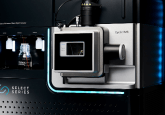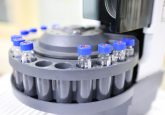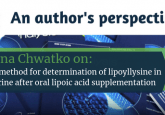What is bioanalysis? Bioanalysis Zone FAQs

What is bioanalysis?
Bioanalysis is a sub-discipline of analytical chemistry and generally involves the identification and quantification of a substance of interest (usually xenobiotics or biotics) in a given biological sample, for example blood, plasma, serum, urine or tissue extracts.
What is a xenobiotic?
Xenobiotics are molecules found in an organism that are not endogenous to the host or a naturally occurring molecule that is present in much higher concentrations than would be expected. These can include drugs, carcinogens, environmental pollutants and food additives.
What is a biotic?
Biotics are molecules produced by and found naturally in an organism. These can include small molecules, large molecules, oligonucleotides, DNA, proteins and metabolites.
What do bioanalysts do?
Bioanalysts utilize a wide variety of techniques and technologies to carry out qualitative and quantitative research with the aim of characterizing parameters relating to a substance of interest in a given biological sample.
Bioanalysts carry out a wide range of processes including sample preparation, instrument operation and data analysis. Bioanalysts are also regularly involved in the development and validation of assays.
What is an assay?
An assay is a quantitative or qualitative test of a substance to determine its components. In the case of bioanalysis, assays are frequently used to test the presence or concentration of a given component in a biological sample, this can include – but is not limited to – drugs, metabolites, antibodies, biomarkers etc.
What techniques are used by bioanalysts?
Bioanalysts make use of a continuously progressing and expanding bank of techniques and technologies. These range from mass spectrometry, chromatography and electrophoresis to ligand binding assays (LBA) and hybrid or coupled techniques such as liquid chromatography mass spectrometry (LCMS). Automation is increasingly being used to improve bioanalytical workflow efficiency.
Where does the field of bioanalysis fit into the drug R+D pipeline?
Bioanalysis is widely accepted to be an integral part of various stages of drug and biotherapeutics R+D, from discovery through to development. In the early drug discovery phase, the role of bioanalysis can involve the development of a high throughput screening assay that can rapidly, reliably and accurately measure a parameter that can indicate a lead molecule.
After early drug discovery phases, the drug moves into preclinical development where robust and reliable bioanalytical research must evaluate the drug candidates pharmacokinetic (PK), toxicokinetic (TK) and pharmacodynamic (PD) properties.
If the drug candidate reaches the clinical stage of drug development, bioanalysis remains an integral component of the research, with robust assays required to analyze human samples (e.g. plasma, serum or urine matrix).






